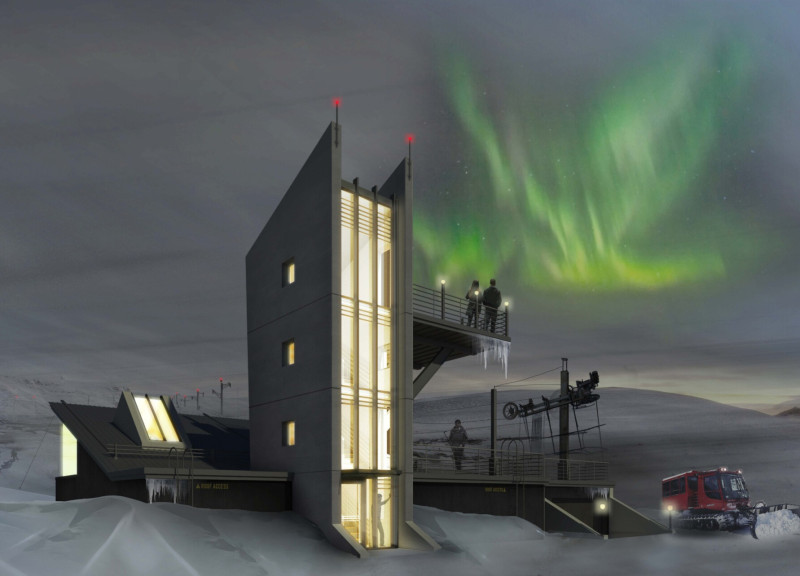5 key facts about this project
The design focuses on creating a multifunctional environment that caters to various user needs, emphasizing adaptability and inclusiveness. The layout promotes fluid movement between different areas, encouraging interaction and engagement. Key elements such as communal spaces and private zones are thoughtfully positioned to facilitate a balance between social interaction and individual retreat, demonstrating a nuanced understanding of modern living dynamics.
Materials play a pivotal role in achieving the project's vision. The choice of materials reflects a commitment to sustainability and longevity. Facades are crafted from a combination of locally sourced stone and glass, which not only ties the building to its geographical context but also enhances energy efficiency. The use of metal accents provides a contemporary feel while ensuring structural integrity. Inside, warm wood elements create an inviting atmosphere, establishing a tactile connection that enhances user experience. Concrete is employed where durability is crucial, particularly in high-traffic areas, ensuring the structure withstands the test of time.
The architectural design employs large windows strategically placed to capture natural light, reducing the reliance on artificial lighting during the day. This attention to daylighting not only improves energy efficiency but also enriches the internal environment, fostering a sense of well-being among occupants. The integration of green roofs and vertical gardens contributes to biodiversity while also providing natural insulation and aiding in water management. These features reflect a broader commitment to ecological stewardship, highlighting the potential for architecture to harmonize with its surroundings.
Furthermore, the project uniquely addresses climate responsiveness. The orientation of the building has been meticulously planned to harness prevailing winds for natural ventilation while minimizing exposure to harsh sun during peak hours. This thoughtful approach underscores the importance of climate-responsive architecture in contemporary design.
Unique design approaches are evident throughout the project, particularly in the innovative use of space. Rather than adhering to conventional layouts, the design embraces flexible configurations that allow for adaptability over time. Open-plan areas can easily transform to serve different functions, whether for public gatherings or private events, showcasing a forward-thinking perspective on how architectural spaces can evolve with their users.
The interplay between indoor and outdoor environments is another significant aspect of the project. Expansive terraces invite occupants to experience the surrounding landscape, fostering a strong connection between interior spaces and nature. This blurring of boundaries enhances the overall experience, encouraging outdoor activities and socialization.
In addition to its functional and aesthetic merits, the project serves as a testament to thoughtful urban planning. By prioritizing pedestrian pathways and creating inviting entry points, the design promotes walkability and community engagement. The architecture stands not only as a building but as a contributor to a thriving civic life, encouraging interaction within the neighborhood.
For those interested in delving deeper into this architectural endeavor, it is worthwhile to explore the project presentation further. Detailed architectural plans, architectural sections, and comprehensive architectural designs provide invaluable insights into the underlying concepts and design choices. Engaging with these materials fosters a richer understanding of the architectural ideas at play, highlighting the thoughtfulness and creativity that define this project.


























